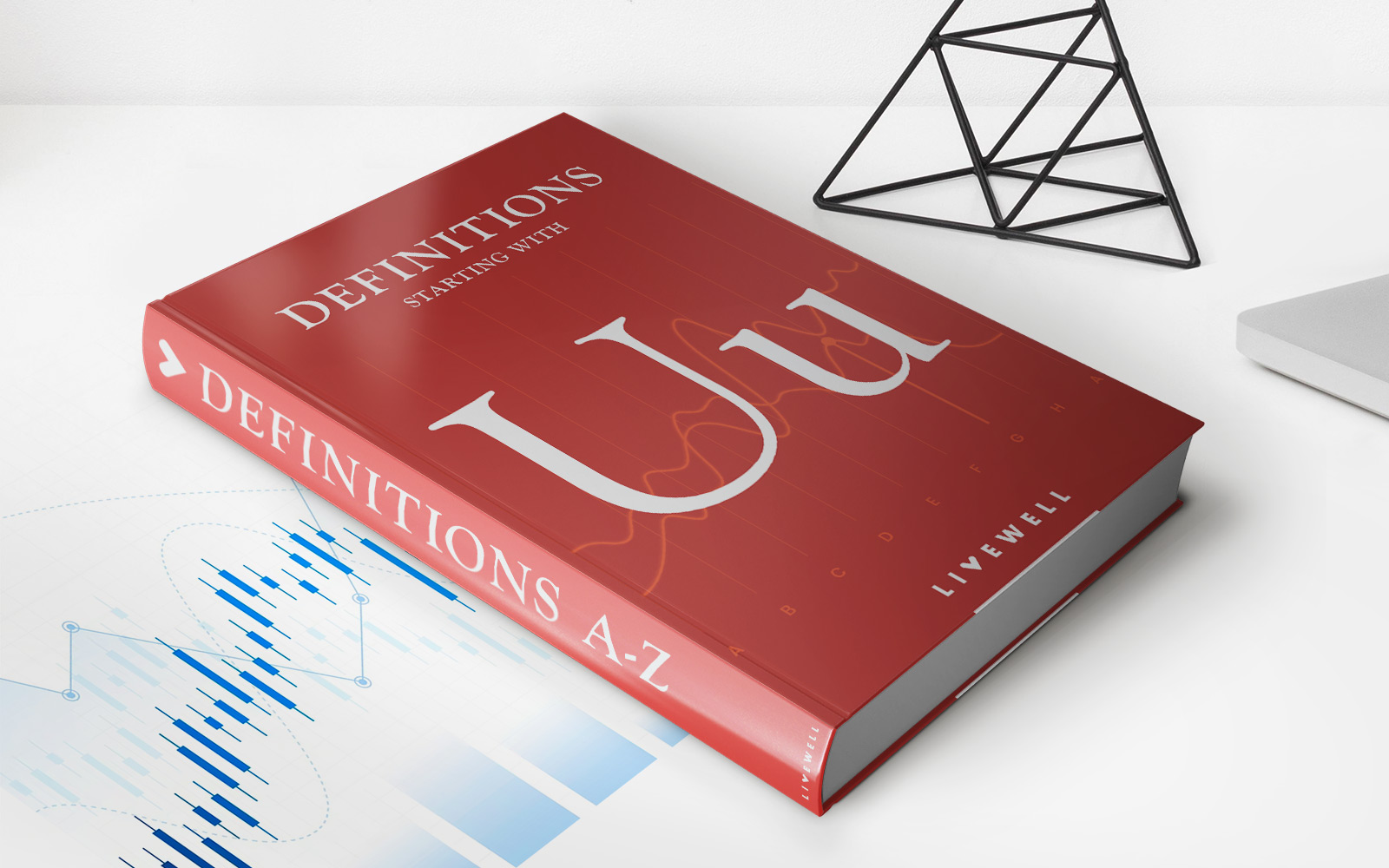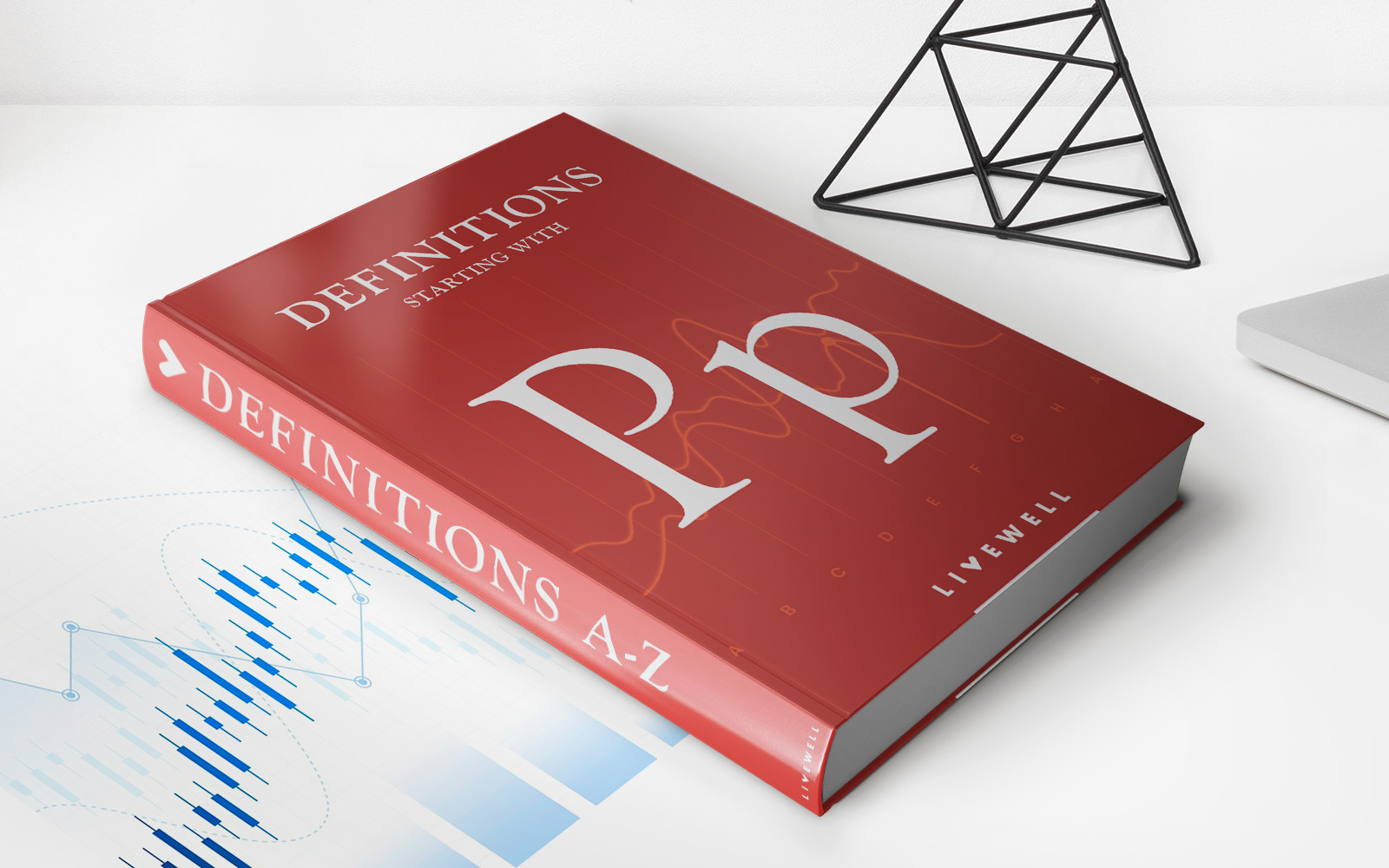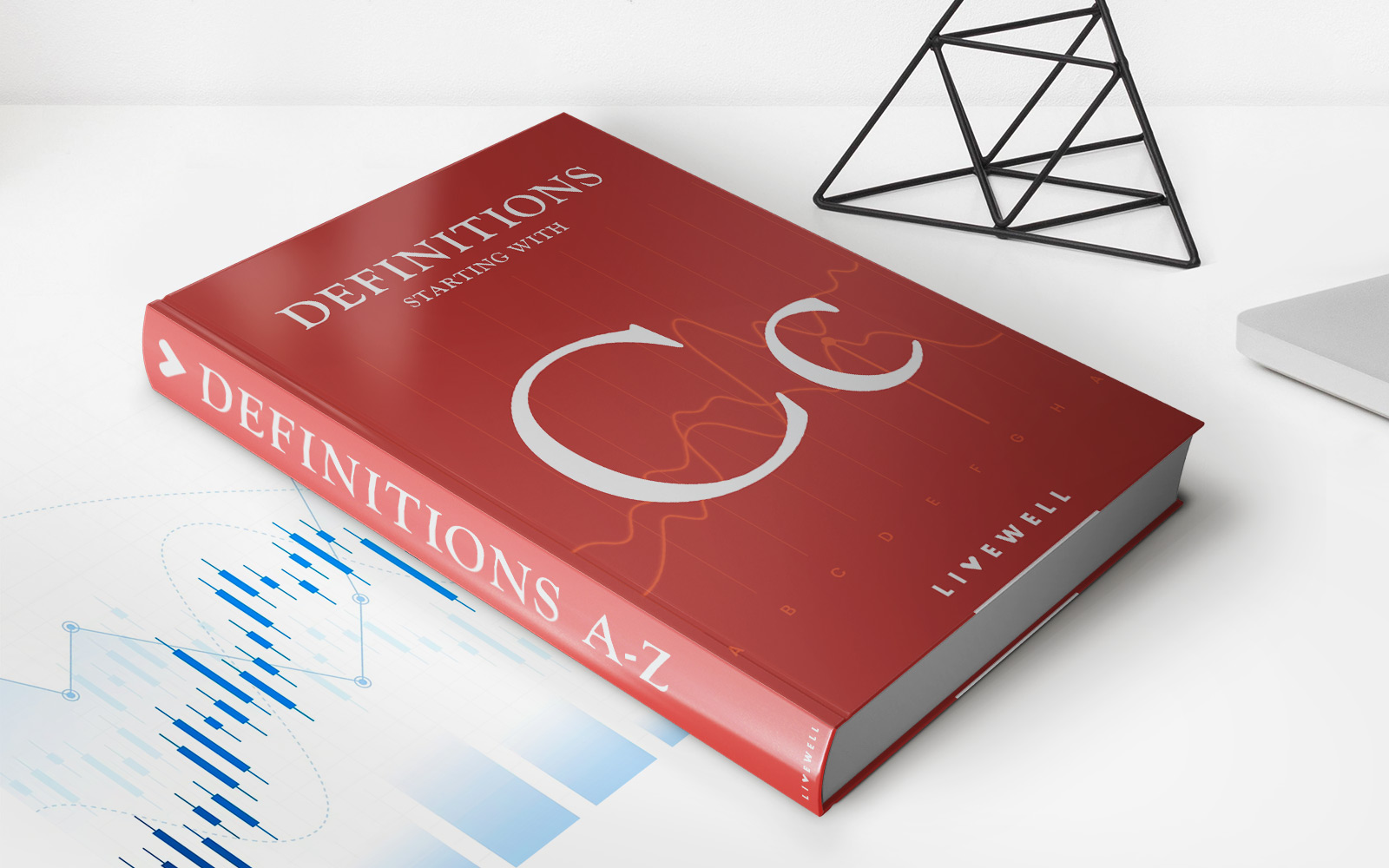

Finance
What Happens To Your Pension When You Divorce
Published: November 27, 2023
Discover what happens to your pension during a divorce and how it can impact your financial future. Navigate the complexities of dividing assets with expert financial advice.
(Many of the links in this article redirect to a specific reviewed product. Your purchase of these products through affiliate links helps to generate commission for LiveWell, at no extra cost. Learn more)
Table of Contents
- Introduction
- Understanding Pension Rights
- Dividing Pension Assets
- Types of Pension Plans
- The Role of the Court in Dividing Pensions
- Qualified Domestic Relations Orders (QDROs)
- Factors to Consider in Dividing Pensions
- Tax Implications of Dividing Pensions
- Pension Valuation and Expert Evaluation
- Pension Offset and Alimony
- Impact of Remarriage on Pension Rights
- Estate Planning and Pension Benefits
- Conclusion
Introduction
Divorce can be a complex and emotionally challenging process, especially when it comes to dividing financial assets. One important aspect that often arises during divorce proceedings is the division of pension rights. A pension is a valuable retirement benefit that individuals accumulate over the course of their working years, and understanding how it will be divided is crucial for both parties.
In this article, we will explore the intricacies of dividing pension assets in divorce cases, including the various types of pension plans, the role of the court, and the use of Qualified Domestic Relations Orders (QDROs). We will also discuss the factors to consider when determining how a pension will be divided, the tax implications involved, and the importance of pension valuation and expert evaluation. Additionally, we will touch on the concept of pension offset and its relationship to alimony, as well as the impact of remarriage on pension rights and the importance of estate planning.
Divorce can be overwhelming, but having a clear understanding of the implications for pension rights can help individuals make informed decisions about their financial future. Whether you are the spouse with the pension or the spouse entitled to a share, it is crucial to be aware of your rights and the options available to you to ensure a fair and equitable division of assets.
Throughout this article, we will provide valuable insights to guide you through the process of dividing pension assets in divorce, empowering you to make well-informed decisions and navigate this complex terrain with confidence.
Understanding Pension Rights
Pension rights refer to the accumulated retirement benefits that an individual has earned during their employment. These benefits are typically provided by an employer-sponsored pension plan and serve as a financial safety net for individuals in their retirement years.
When it comes to divorce, understanding the nature of pension rights is essential. In many jurisdictions, pensions are considered marital assets and are subject to division during divorce proceedings. The allocation of pension rights may vary depending on the jurisdiction and the specific circumstances of the divorce.
It is important to note that pension rights can be divided into two distinct components: the present value of the pension (often referred to as the pension “pot”) and the actual periodic payments received during retirement (often referred to as the pension “paycheck”).
The division of pension rights can occur in various ways, depending on the jurisdiction and applicable laws. Some common methods include:
- Equal division: In this approach, the pension is split equally between the spouses, with each receiving an equal portion of the present value of the pension and future pension payments.
- Proportional division: With this method, the pension is divided proportionally based on the length of the marriage and the individual’s contributions to the pension during the marriage.
- Deferred division: In some cases, the division of pension rights may be deferred until the employee-spouse actually begins receiving pension benefits.
In order to ensure a fair and accurate division of pension rights, it is essential to obtain a thorough understanding of the pension plan, including its specific terms, vesting requirements, and any applicable restrictions or limitations.
Working with a financial professional or pension expert can be invaluable in navigating the complexities of pension rights. These experts can help assess the present value of the pension, evaluate different division options, and ensure compliance with the necessary legal requirements.
Understanding your pension rights is crucial for making informed decisions during divorce proceedings. By gaining a clear understanding of the value and distribution of your pension, you can better advocate for your financial future and ensure a fair and equitable division of assets.
Dividing Pension Assets
When it comes to dividing pension assets during divorce, there are several approaches that can be taken. The method used will depend on various factors, including the type of pension plan and the jurisdiction’s laws and regulations.
One common approach is the use of a Qualified Domestic Relations Order (QDRO). A QDRO is a legal document that directs the administrator of a retirement plan to divide the pension benefits between the divorcing spouses. It establishes the rights of the non-employee spouse to receive a portion of the employee spouse’s pension.
A QDRO allows for the division of pension assets without triggering early withdrawal penalties or tax consequences. It also ensures that each spouse receives their fair share of the pension based on the terms of the divorce settlement or court order.
It’s important to note that not all pension plans are subject to division using a QDRO. Government pensions, such as those offered to military personnel or federal employees, may require a different type of order, such as a Military Order or a Federal Retirement Order.
Another method used to divide pension assets is the offset approach. With this method, the non-employee spouse receives other marital assets, such as a portion of the family home or investment accounts, in lieu of their share of the pension. This approach is often used when the pension is difficult to value or when the value of the pension is relatively small compared to other marital assets.
It’s important to work with a divorce attorney or financial professional who has expertise in pension division to ensure that the division of pension assets is done accurately and in compliance with relevant laws and regulations. They can guide you through the process, explain your options, and help you make the best decisions based on your specific circumstances.
Dividing pension assets during divorce can be a complex process. It is crucial to approach it with careful consideration and seek professional guidance to ensure a fair and equitable division of assets.
Types of Pension Plans
There are several types of pension plans that individuals may have and need to consider when going through a divorce. Understanding the specific type of pension plan is crucial for determining how it will be divided and its overall value.
1. Defined Benefit Plans: Defined Benefit plans, also known as traditional pension plans, provide retirees with a fixed, pre-determined monthly benefit based on factors such as years of service and salary history. The value of these plans can vary greatly depending on the formula used to calculate the benefits. Dividing a defined benefit plan often involves determining the present value of the pension and the proportional share that each spouse is entitled to receive.
2. Defined Contribution Plans: Defined Contribution plans, such as 401(k)s and Individual Retirement Accounts (IRAs), are retirement savings plans where contributions are made by both the employee and employer. The value of these plans is typically based on the amount contributed, investment performance, and the length of time the funds have been invested. Dividing defined contribution plans involves determining the value of the assets at the time of divorce and allocating a suitable portion to each spouse.
3. Government Pensions: Government pensions, including those for military personnel and federal employees, have specific rules and regulations regarding division during divorce. These plans often require a separate court order, such as a Military Order or a Federal Retirement Order, to accurately divide the pension benefits.
4. Cash Balance Plans: Cash Balance plans are a hybrid between defined benefit and defined contribution plans. They provide retirees with a fixed benefit based on a percentage of their salary and a hypothetical account balance that grows each year based on a predetermined interest rate. Dividing cash balance plans may involve determining the present value of the account balance and dividing it proportionally between the spouses.
It’s important to note that the rules and regulations surrounding the division of pension plans vary by jurisdiction. Additionally, the terms of the pension plan and any prenuptial or postnuptial agreements can impact how the plan is divided during a divorce.
When navigating the division of pension plans in divorce, consulting with a financial professional or divorce attorney who specializes in pensions can provide valuable guidance. They can help determine the type of pension plan involved, evaluate its value, and ensure that the division is done in accordance with applicable laws and regulations.
Understanding the different types of pension plans is essential for a fair and equitable division of assets during divorce.
The Role of the Court in Dividing Pensions
In the process of divorce, the court plays a pivotal role in the division of pension assets. The court’s responsibility is to ensure a fair and equitable distribution of marital assets, including pension rights.
When it comes to dividing pensions, the court considers several factors, such as the length of the marriage, the contributions made by each spouse to the pension, and the financial needs and circumstances of both parties.
The court will typically evaluate the following elements when determining the division of pension assets:
- Marital vs. Separate Property: The court will determine what portion of the pension is considered marital property, which is subject to division, and what portion is considered separate property, which may not be divided. Contributions made to the pension during the course of the marriage are generally considered marital property.
- Equitable Distribution: Many jurisdictions follow the principle of equitable distribution, which does not necessarily mean a 50/50 split but rather aims at a fair and just allocation of assets considering the specific circumstances of each case.
- Other Factors: The court will also take into account other factors such as the age and health of the parties, the earning potential and financial needs of each spouse, and any prior agreements, such as prenuptial or postnuptial agreements.
It’s important to note that while some divorcing couples are able to come to an agreement on the division of pension assets, others may require the court to make a final determination. In these cases, each party will present their arguments and evidence to the court, and the judge will make a decision based on applicable laws and the best interests of both parties.
Working with an experienced divorce attorney is crucial in navigating the court process and ensuring that your rights and interests regarding pension division are adequately represented. They can help gather the necessary documentation, present a strong case, and advocate for a fair division of the pension assets.
The court’s role in dividing pensions in divorce is to ensure a fair and equitable distribution of assets. By understanding the factors that the court considers and seeking professional advice, individuals can better navigate the legal process and work towards a satisfactory resolution.
Qualified Domestic Relations Orders (QDROs)
A Qualified Domestic Relations Order (QDRO) is a court-ordered document that establishes the division of pension assets between divorcing spouses. It ensures that the non-employee spouse receives their rightful share of the pension benefits without incurring early withdrawal penalties or adverse tax consequences.
Here are some key points to understand about QDROs:
1. Purpose of a QDRO: The primary purpose of a QDRO is to divide pension benefits between spouses during divorce proceedings. It outlines the specifics of how the benefits will be divided, including the amount or percentage allocated to each spouse and the method of distribution (lump sum, periodic payments, etc.).
2. Qualified Plan Requirements: QDROs are typically used for pension plans that fall under the Employee Retirement Income Security Act (ERISA). These plans include private employer-sponsored pensions, such as defined benefit plans and 401(k)s. Government pensions, such as those for military personnel or federal employees, may require a different type of order, such as a Military Order or a Federal Retirement Order.
3. Drafting and Approval: QDROs must meet certain legal requirements and be approved by the court and the plan administrator to be considered valid. It’s crucial to work with an attorney or an experienced QDRO specialist who understands the specific rules and regulations of the pension plan and can draft a compliant QDRO.
4. Key Components: A QDRO typically includes important details such as the names and addresses of the divorcing spouses, the name of the pension plan and its administrator, the specific benefits being divided, the amount or percentage to be allocated to each spouse, and the method and timing of distribution.
5. Distribution Options: QDROs offer flexibility in how the pension benefits are distributed. The non-employee spouse can choose to receive their share as a lump sum payment, roll it over into an individual retirement account (IRA), or receive periodic payments once the employee spouse becomes eligible for retirement.
6. Coordination with the Plan Administrator: Once the QDRO is approved by the court, it must be submitted to the plan administrator for review. The plan administrator will ensure that the QDRO complies with the plan’s requirements and will facilitate the distribution of benefits as outlined in the QDRO.
Dividing pension assets using a QDRO is an essential step in ensuring a fair division of assets during divorce. It allows for the division of pension benefits without incurring penalties or tax consequences and provides a clear framework for the distribution of benefits to the non-employee spouse.
As QDROs can be complex and require a deep understanding of pension plans and legal requirements, it’s crucial to work with professionals who specialize in QDRO drafting and approval. They can assist in ensuring that the QDRO accurately reflects the intentions of both parties and meets all necessary regulations to facilitate a smooth distribution of pension benefits.
Factors to Consider in Dividing Pensions
When dividing pensions during a divorce, several factors need to be considered to ensure a fair distribution of the marital assets. These factors can vary depending on jurisdiction and the specific circumstances of the case. Understanding these factors will help both parties navigate the division process and reach an equitable agreement.
1. Length of the Marriage: The length of the marriage is a key factor in determining how pensions are divided. In general, the longer the marriage, the greater the likelihood that both spouses have made significant contributions to the pension, making an equal or proportional division more appropriate.
2. Contributions to the Pension: The contributions made by each spouse to the pension during the course of the marriage are another important consideration. Courts often look at the direct and indirect contributions of each spouse, including financial contributions, career sacrifices, and raising children, when determining the division of pension assets.
3. Age and Health of the Parties: The age and health of both parties can play a role in the division of pensions. Courts may consider the ability of the non-employee spouse to generate income or accumulate retirement savings in the future when determining their share of the pension.
4. Financial Needs and Circumstances: The financial needs and circumstances of both parties are crucial factors in pension division. The court will consider the income, assets, debts, earning potential, and future financial security of each spouse when determining a fair distribution of pension assets.
5. Pre- and Post-Nuptial Agreements: If a couple has a prenuptial or postnuptial agreement that addresses the division of pensions, the court will consider the terms outlined in the agreement. These agreements can help guide the distribution process and ensure that both parties are aware of their respective rights and obligations regarding the pension.
6. Other Marital Assets: The presence of other marital assets, such as property, investments, or savings accounts, can impact the division of pensions. Courts may consider these assets when determining the equitable distribution of pension assets, aiming for a fair overall division of marital property.
7. Future Value of the Pension: The future value of the pension is an important factor to consider. This includes factors such as the potential growth of the pension, cost-of-living adjustments, and survivor benefits. Taking these future considerations into account can help ensure that the division of the pension is fair for both parties.
It is essential to work with a divorce attorney or financial professional who has expertise in pension division to ensure that all relevant factors are considered and that a fair and equitable division of pension assets is achieved. These professionals can help assess the unique circumstances of the case, calculate the present value of the pension, and negotiate a settlement that best meets the needs of both parties.
By carefully considering these factors, divorcing spouses can work towards a fair and amicable division of pension assets that takes into account the contributions and financial circumstances of each party.
Tax Implications of Dividing Pensions
Dividing pensions in a divorce can have significant tax implications for both parties involved. It is crucial to understand these implications to make informed decisions and avoid any unexpected tax burdens. Here are some key tax considerations when dividing pensions:
1. Taxable and Non-Taxable Distributions: Pensions are typically subject to income tax when received by the participant. Therefore, if the non-employee spouse receives a portion of the pension directly, they will be responsible for paying taxes on that amount. It’s important to consider the effect of income taxes on the overall value of the pension and adjust the division accordingly.
2. Qualified Domestic Relations Order (QDRO): Using a QDRO to divide the pension can help minimize tax consequences. In a QDRO, the non-employee spouse can roll their share of the pension into an individual retirement account (IRA) without incurring taxes at the time of the roll-over. This allows the funds to continue growing tax-deferred until they are withdrawn during retirement.
3. Early Withdrawal Penalties: It’s important to note that any early withdrawal from a pension by the non-employee spouse, without using a QDRO or another qualified method, may result in early withdrawal penalties. These penalties can be substantial, so it’s important to consult with a tax professional or financial advisor to understand the potential consequences.
4. Division of Tax-Deferred and Roth Accounts: Different types of pension plans have varying tax implications. Traditional tax-deferred accounts, such as 401(k)s and traditional IRAs, are taxed upon withdrawal. On the other hand, Roth accounts are funded with after-tax contributions, and withdrawals are typically tax-free. Understanding the type of pension plan involved will help determine the tax consequences of dividing the pension assets.
5. Capital Gains Tax: When dividing other marital assets to offset the pension share, such as property or investments, it’s important to consider potential capital gains tax. The transfer of these assets may trigger capital gains tax if their value has appreciated since their acquisition. It’s crucial to consult with a tax advisor to assess the potential tax implications of dividing these assets.
6. Tax Reporting and Documentation: Divorcing spouses should ensure proper tax reporting and documentation throughout the division process. This includes accurately reporting any distributions or rollovers on tax returns and maintaining records of the division agreements and any QDROs or other court orders related to the pension division.
It is highly recommended to consult with a qualified tax advisor or CPA who specializes in divorce tax matters to get personalized advice based on your specific situation. They can provide guidance on the tax implications of the pension division, help mitigate potential tax burdens, and ensure compliance with relevant tax laws and regulations.
By understanding the tax implications of dividing pensions during divorce, you can make informed decisions that optimize the distribution of assets and minimize tax consequences for both parties. Taking the time to address these tax considerations can lead to a smoother financial transition and help set the stage for a more secure future.
Pension Valuation and Expert Evaluation
Accurately valuing a pension is a critical step in the process of dividing pension assets during a divorce. Since pensions represent a significant portion of a couple’s overall financial picture, it is important to determine the true value of the pension to achieve a fair and equitable division. This is where pension valuation and expert evaluation come into play.
Pension valuation involves assessing the present value of the pension, which takes into account various factors such as the length of the marriage, the accumulated pension funds, the expected future benefits, and any actuarial calculations. It is important to note that the present value of a pension is not simply the total amount accrued, as it needs to be adjusted for factors such as future inflation and changes in life expectancy.
Expert evaluation is often necessary to accurately assess the value of a pension, especially for complex pensions or those offered by government or private-sector employers. Pension valuation experts, such as actuaries or financial analysts, have the knowledge and expertise to analyze the pension plan details, interpret relevant laws, and determine the fair and accurate value of the pension.
These experts will consider factors such as the benefit formula, retirement age, life expectancy, taxation, and any applicable cost-of-living adjustments. They use these factors to calculate the present value and projected future value of the pension, taking into account any specific rules or contingencies embedded within the pension plan.
Expert evaluation is valuable because it provides an objective assessment of the pension’s value and helps ensure that both parties have a clear understanding of the financial implications of the division. It can also serve as evidence during negotiations or court proceedings, providing a solid foundation for reaching a fair settlement.
In addition to expert evaluation, obtaining all relevant documentation regarding the pension plan is crucial. This includes pension statements, plan documents, and any supporting materials that outline the rules and regulations of the pension. Having a complete understanding of the pension plan’s specifics will aid in the accurate valuation and division.
It’s also important to consider the cost of engaging a pension valuation expert. While their services may come at a cost, the expertise provided ensures a more accurate and comprehensive assessment of the pension. The cost may be a worthwhile investment in achieving an optimal financial outcome.
By engaging a pension valuation expert and considering their evaluation, both parties can have a clearer understanding of the true value of the pension. This knowledge is essential when negotiating a fair division of assets or presenting the case to a court. Through expert evaluation, individuals can make informed decisions and secure their financial future post-divorce.
Pension Offset and Alimony
In divorce cases involving pensions, one method for balancing the division of assets is through pension offset, which may be connected to the calculation and negotiation of alimony or spousal support. Pension offset refers to the reduction or elimination of alimony payments in exchange for a larger portion of the pension benefits.
Under this approach, the non-employee spouse may agree to relinquish or reduce their claim to a portion of the pension in exchange for a higher share of other marital assets or a lump-sum payment. The idea behind pension offset is that the pension itself becomes an asset to be considered when determining the overall financial settlement, including the determination of alimony.
How pension offset is applied can vary depending on the jurisdiction and the specific circumstances of the case. In some instances, alimony payments may be offset by a percentage of the pension’s value. Alternatively, the court may use a formula to calculate the present value of the pension and adjust the alimony amount accordingly.
It’s important to note that pension offset can have long-term implications for both parties. The non-employee spouse who agrees to the offset may bear the risk of the pension’s performance and may have to manage that asset effectively to sustain their financial well-being in the future. The employee spouse, on the other hand, may need to consider the impact of the larger share of the pension on their retirement plans and other financial goals.
When considering pension offset and its relation to alimony, it is advisable to consult with a divorce attorney or financial professional to fully understand the pros and cons of this approach. Additionally, thorough financial analysis is essential to determine the value and potential growth of the pension, assess tax implications, and evaluate the long-term financial consequences for both parties.
It is worth noting that in some jurisdictions, pension offset may not be permitted or may have legal limitations. Therefore, understanding the laws and regulations in your specific jurisdiction is crucial in determining whether this approach is applicable to your situation.
Ultimately, pension offset can provide a means for achieving an equitable division of assets and fulfilling financial obligations within the context of divorce. However, careful consideration is needed to ensure that the arrangement is fair and sustainable for both parties in the long run.
Impact of Remarriage on Pension Rights
Remarriage can have implications on pension rights for individuals who have previously been divorced and are receiving or anticipating pension benefits. Understanding the potential impact of remarriage is important when it comes to financial planning and managing pension assets.
1. Survivor Benefits: Many pension plans provide survivor benefits that ensure a continued stream of income to the non-employee spouse in the event of the employee spouse’s death. However, in some cases, remarriage can result in the forfeiture of these survivor benefits. Pension plans may terminate spousal benefits upon remarriage, leaving the new spouse without any entitlement to the pension.
2. Social Security and Government Pensions: If the non-employee spouse is receiving Social Security benefits based on their former spouse’s record or is entitled to a government pension through the former spouse’s employment, remarriage may impact these benefits. Remarriage may result in the loss of eligibility for certain benefits, such as Social Security spousal benefits or a survivor benefit from a government pension program.
3. Pension Division Revisions: In some jurisdictions, remarriage may provide grounds for revisiting the division of pension assets. If the employee spouse remarries and their future spouse would also have a claim to their pension in the event of a divorce, the court may choose to revisit the division of pension assets to ensure an equitable distribution takes into account the new marriage.
4. Financial Planning Considerations: Remarriage can also have broader financial implications on pension planning. It is important to reassess retirement goals, savings strategies, and beneficiary designations to align with the new marital status. Reviewing estate planning documents, such as wills and trusts, is also crucial to ensure the intended distribution of assets in the event of death.
It is important to consult with a divorce attorney or financial advisor to understand the specific laws and regulations surrounding remarriage and its impact on pension rights in your jurisdiction. They can provide guidance on any potential adjustments that may need to be made to financial plans, beneficiary designations, or existing pension agreements.
Overall, remarriage can have significant implications for pension rights and financial planning. Understanding the potential impact allows individuals to make informed decisions, revise their retirement strategies, and ensure that intended beneficiaries are protected in the event of remarriage or death.
Estate Planning and Pension Benefits
Estate planning plays a crucial role in ensuring the proper distribution of assets, including pension benefits, upon a person’s death. Effectively incorporating pension benefits into an estate plan can provide peace of mind and help preserve the financial well-being of loved ones. Here are some key considerations when it comes to estate planning and pension benefits:
1. Designating Beneficiaries: One of the most important aspects of estate planning is designating beneficiaries for pension benefits. This ensures that the pension proceeds go to the intended recipients after the pension holder’s death. It is essential to review and update beneficiary designations regularly, especially after significant life events such as divorce, remarriage, or the birth or adoption of children.
2. Spousal Benefits: Many pension plans offer spousal benefits, allowing the non-employee spouse to continue receiving a portion of the pension after the employee spouse’s death. Including provisions for these spousal benefits in the estate plan is crucial to ensure a smooth transition of pension income and financial stability for the surviving spouse.
3. Trusts: Trusts can be valuable tools in managing and distributing pension benefits. Establishing a trust as part of an estate plan allows for more control and flexibility over how pension assets are distributed. It can also provide safeguards, such as preventing beneficiaries from squandering the pension funds, protecting assets from creditors or lawsuits, and minimizing estate taxes.
4. Minimizing Estate Taxes: Careful estate planning can help minimize the impact of estate taxes on pension benefits. Strategies like gifting, creating trusts, or utilizing tax-efficient retirement vehicles can help reduce estate tax liability, ensuring a greater portion of the pension benefits pass to heirs.
5. Reviewing Estate Planning Documents: Regularly reviewing estate planning documents, such as wills, trusts, and powers of attorney, is essential to ensure they align with changes in pension benefits or other financial circumstances. Updating these documents when necessary helps ensure that the intended beneficiaries and provisions for pension benefits are accurately reflected.
6. Seeking Professional Guidance: Given the complexity of estate planning and pension benefits, it is advisable to consult with an experienced estate planning attorney or financial advisor. They can provide personalized advice based on specific goals and circumstances, ensure compliance with relevant laws and regulations, and offer strategies to optimize the distribution of pension benefits.
Estate planning is a critical aspect of managing pension benefits and ensuring they are appropriately distributed upon death. By taking the time to create or update an estate plan that incorporates pension benefits, individuals can ensure that their loved ones are cared for and their financial wishes are honored. Regular review and consultation with professionals are essential to adapt the estate plan to changing circumstances and maximize the efficiency of pension benefit distribution.
Conclusion
Dividing pension assets during a divorce can be a complex and emotionally charged process, but understanding the intricacies and implications is crucial for both parties involved. By gaining a solid grasp of the various factors that come into play, individuals can make informed decisions and navigate the division of pensions with confidence.
As discussed in this article, understanding pension rights, the role of the court, and the use of Qualified Domestic Relations Orders (QDROs) is key to ensuring a fair and equitable division of pension assets. Factors such as the length of the marriage, contributions made, and the financial needs of both parties should be carefully considered during this process.
Other critical considerations include the tax implications of dividing pensions, pension valuation, and the potential need for expert evaluation. These factors can significantly impact the overall financial settlement and long-term financial security of both parties.
Several additional factors come into play, such as pension offset in relation to alimony, the impact of remarriage on pension rights, and the importance of estate planning in preserving and distributing pension benefits effectively. Each of these aspects requires careful thought and consideration to ensure a comprehensive approach to managing pension assets.
Throughout the divorce process and the division of pension assets, seeking guidance from professionals specializing in divorce law, financial planning, and pension valuation is highly recommended. These experts can provide valuable insights, offer strategies tailored to individual circumstances, and ensure compliance with legal requirements.
In conclusion, navigating the division of pension assets in divorce requires careful consideration of various factors, adequate understanding of the legal landscape, and expertise in pension valuation and financial planning. By approaching the process with knowledge, diligence, and professional guidance, individuals can strive for a fair and equitable distribution of pension assets, contributing to a more financially secure future for both parties involved.














